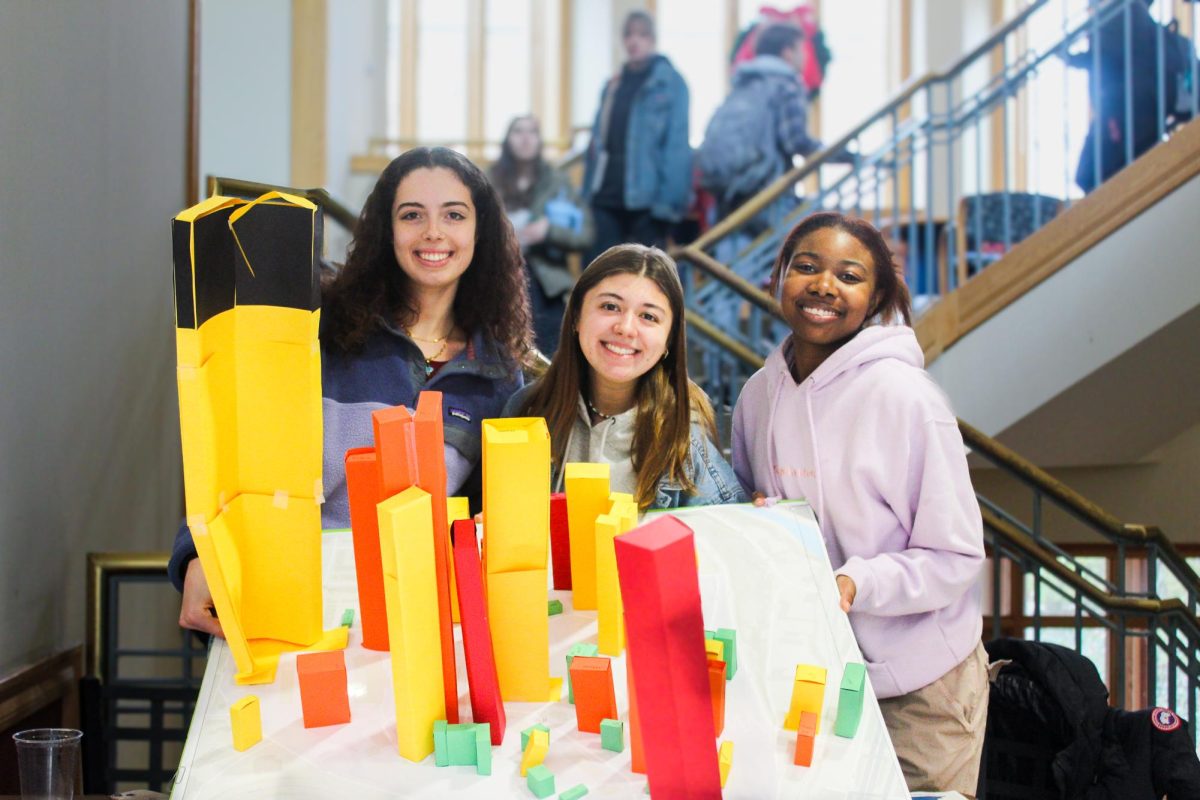Student interns from the Office of Sustainability presented research this week on electricity usage in on-campus buildings. The data reveals important measures that are being taken into consideration to work towards a more sustainable campus.
The team created a graph that contains information regarding each building’s energy consumption in kilowatts per hour. Combining this information with square footage data for each building allowed the group to make simple calculations to show the campus’ electric efficiency.
“Because the accounting team at facilities, from a budget management perspective, has to keep track of [electrical utility] data, they are able to provide us with a spreadsheet,” Melissa Adamson, Sustainability’s climate action and circularity manager, said. “[These calculations show] which buildings consume the most electricity, but then also how they stack up from a kilowatt hours per square foot perspective.”
The interns brainstormed different ways to present this data to other students and faculty. Team members ultimately decided to create a 3D model depicting a map of the entire campus. Flyers that elaborated on the data and explained the model in greater depth were also created and distributed.
In the model, the height of each building represents its total energy consumption, while the color of each building represents its “energy use intensity.” Because different building uses on campus have different energy intensities, the numeric thresholds for color vary by building use type.
“Green buildings had relatively good levels of energy consumption, according to their department,” sustainability intern Mita Crane ’26 said. “Yellow was not as good and red was the worst.”
Kirby Sports Center was found to consume the most amount of energy, using more than 2.5 million kilowatts hours in 2022-2023. However, Hugel Science Center consumes the most energy in terms of kilowatt hours per square foot, siphoning a total of 58 kilowatts per hour per square foot.
Communicating the difference between total energy consumption and energy intensity proved to be challenging for interns. However, Crane believes tabling at Farinon has been largely successful.
“I think students have been interested to learn more about the process of how we determined which buildings were good and bad in terms of energy consumption and intensity,” Crane said. “The main goal is just to get people asking more questions and more interested in these topics.”
In addition to presenting this data to the community, the Office of Sustainability plans to implement immediate behavioral changes and look toward long-term improvements on a larger operational level.
Behavioral changes include using air conditioning responsibly, relying on natural light as opposed to artificial light and unplugging electronics when not in use. Campus-wide operational changes mainly include prioritizing energy efficiency during new construction and renovations.
“Our energy conservation projects over the years have all added up to improve our electricity demand on campus,” Adamson said. “With that said, there are projects that have been lingering since 2019 that we know and confirmed through this study. Nothing magically got more energy efficient on its own, so those projects are still priority areas.”
With all this in mind, the Office of Sustainability has not lost sight of the college’s larger climate action goals.
“I believe that this project, if anything, highlights the need for us to speed up the pace at which we’re doing energy conservation projects,” Delicia Nahman, the sustainability director, said, noting the college’s 2035 carbon neutrality goal. “We’re not moving the needle quickly enough.”





































































































